|
MEIEA Proposed Branding Action Plan
Workgroup: T. Butler, J. Kellogg, E.M. Harrington, W. Bulla
Submitted January 15, 2006
Background
The fall 2005 MEIEA board & member’s surveys established the relative importance of the pursuit of the following initiatives:
1 Brand the Name as a Leading Association of Educators
2 Publish Curriculum "Standards" or "Recommendations"
3 Increase Professional Practitioner Members
4 Increase Student Members
5 Provide Research Stipends for Faculty
6 Increase Faculty/Educator Members
7 Increase Institutional Members
8 Improve the Website
9 Provide Scholarships for Students
This action plan will address items #1 and #3 directly (Brand the Name as a Leading Association of Educators and Increase Professional Practitioner Members respectively) and items #s 4, 6, and 7 indirectly (Increase Student Members, Increase Faculty/Educator Members, and Increase Institutional Members respectively).
Proposal
In response to Initiative item #1, “Brand the Name as a Leading Association of Educators,” the following proposal was suggested:
In order to brand the MEIEA name and logo -- propose that the Association advertise the name and logo nationally on a monthly basis using major trade and education publications such as Billboard, Variety, MENC, NEA, etc. $1,000 per month, simple, B&W/single/dual color 1/4- to 1/2-page adds. Duration: 3 years. $12,000/yr. Total expenditures $36,000.
Charge of the Workgroup
(1) Specific and purposefully defined goals with outcomes.
The primary goals of this action are to raise the awareness of the association within the entertainment and music industries and among entertainment and music industries educators, and to establish the perception that MEIEA is a/the quality/leading association of music and entertainment industry educators [Initiative #1]. The secondary goal of this action is to increase membership, specifically among “Professional Practitioner Members” [Initiative #3] through raising awareness and establishing a positive perception regarding the quality of the association’s activities.
Logo as Image
The current MEIEA logo employs a music notation “G” clef with a music staff boxed with the small case letters of the association’s acronym “meiea” with the name of the association in very small block lettering across the bottom. The "G" clef and music staff are a full 25% of the image and the name of the association is less than 10% the height of the clef and the acronym font. The use of the large "G" clef causes the image to be weighted toward the “music” side of the “entertainment” businesses and conveys the message that the association is primarily a “music educators” association. Essentially the logo says "MUSIC (and entertainment) Industry Educators Association" (as opposed to “Music AND Entertainment Industry Educators Association”).
The association’s board of directors long ago established that there is a need to increase participation in the association’s activities by the “other” entertainment industries. In order to convey a more balanced image, we propose a change in the logo graphic to something simple, that is less biased toward the "music" industry per se, that will let the name of the association “speak” for itself—a logo that conveys “Music AND Entertainment Industry EDUCATORS Association.” Therefore, we propose to eliminate the G-clef and music staff, increase the font of the name in proportion to the acronym, and make "educators association" more prominent than "music & entertainment industry." By doing so, the image will convey an "educators’ association" focused in the "music and entertainment industry" called "MEIEA."
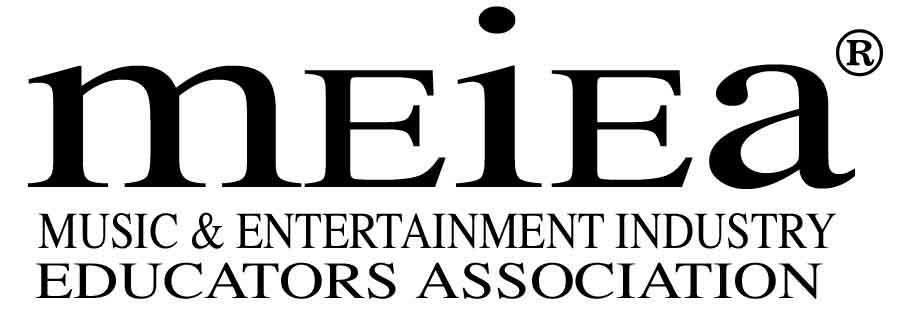
Service Mark, Protection, & Membership Identification
As the Association moves forward with "branding," the Association should register the logo as a service mark with the USPTO under Chapter 1300 “Collective Membership Marks,” Section 1304.09(a) so that the Association can control the use and affiliations of the name and logo. In order to meet the criteria for “collective membership mark” ownership and maintenance, MEIEA will need to issue some type of identification instrument (such as a membership ID card) to all members of the association (see Appendix A, section 1304.09c). We propose, as part of our branding proposal, that MEIEA (1) register the new logo as a “collective membership mark” under Section 4 of the Trademark Act of 1946, 15 U.S.C. §1054 and (2) issue "membership" plaques to all Active members of the Association and pocket ID cards to student members of MEISA.
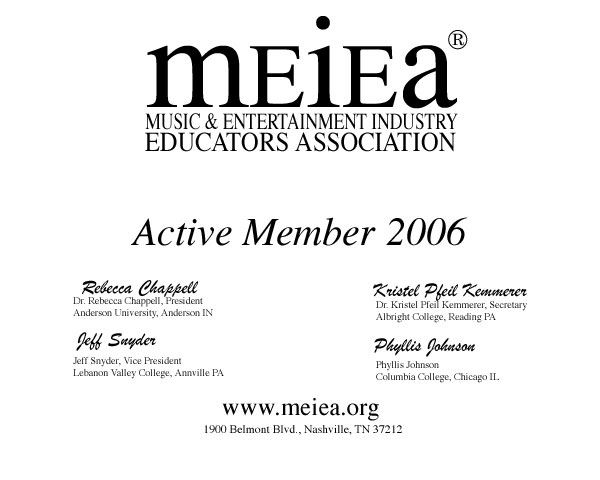
(2) Criteria for benchmarking each goal.
Benchmarking the impact of advertising the Association will comprise monitoring changes in (1) activity of the website, (2) inquires to the home office regarding the Association’s activities, and (3) membership registrations for new members. Additionally, information as to how new members were attracted to the Association will be gathered (via periodic surveys) and analyzed for indications of the advertising campaign’s impact.
(3) Timelines for reaching each goal.
We propose a "front-loaded" 3-year plan with approximately 18 ad.s in the 1st year, 12 ad.s in the 2nd year, and 6 ad.s in the 3rd year. Most of the ad.s will be placed between Aug - Dec. and Jan - April (i.e., during the academic year) with fewer ad.s in the summer months.
The “goals” per se comprise placing advertisements in strategic publications or on strategic websites.
January/February 2006: Place four (4) introductory advertisements in Billboard and Variety trade publications (or other suitable trade publications or websites).
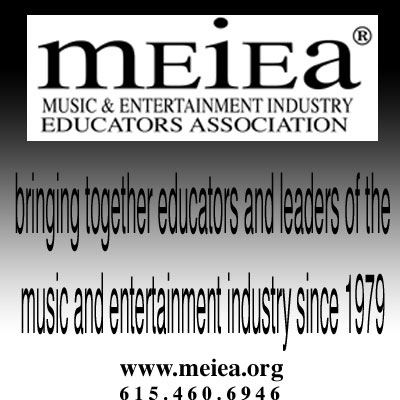
February/March 2006: Place four (4) advertisements for the conference in Billboard and Variety (or other suitable trade publications).
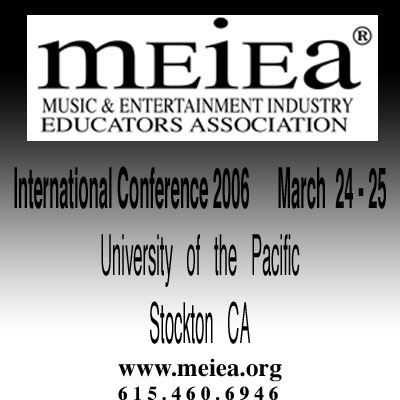
April / May 2006: Place two (2) “perception” advertisements in Billboard and Variety trade publications (or other suitable trade publications).
5a  5b
5b 
Figures 5a & 5b. Advertisements intended to promote a positive image of the Association.
July 2006: Place one (1) “perception” advertisement in Billboard and Variety trade publications (or other suitable trade publications).
6a 6b
6b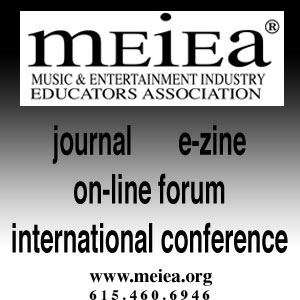
Figures 6a & 6b. Advertisements intended to promote a positive image of the Association.
Aug. / Sept. / Oct. / Nov. 2006: Place seven (7) advertisements in suitable trade or educational publications. These ad.s will rotate through Figures 3, 4, 5a, 5b, 6a, and 6b (note Fig. 4 will advertise the up-coming conference).
January/February 2007: Place three (3) advertisements in suitable trade publications.
February/March 2007: Place three (3) advertisements for the conference in suitable trade publications.
April / May 2007: Place two (2) “perception” advertisements in Billboard and Variety trade publications (or other suitable trade publications).
Aug. / Sept. / Oct. / Nov. 2007: Place four (4) advertisements in suitable trade or educational publications. These ad.s will rotate through Figures 3, 5a, 5b, 6a, and 6b.
January/February 2008: Place three (3) advertisements in suitable trade publications.
February/March 2008: Place three (3) advertisements for the conference in suitable trade publications.
Proposed Branding Budget
The proposed budget includes funds for registration of the service mark, display and on-line advertising, and membership identifications. Rates calculated here are “base” and discounts for quantity may be available allowing for more ad.s or longer on-line placement to be utilized.
| Quantity | Cost $ per Unit |
$ Total | |
| USPTO Trademark Registration, 5 classes of product at $325/each MEIEA Journal, MEIEA E-zine, MEIEA membership, MEISA E-zine, MEISA membership |
5 |
325 |
1,625 |
| Billboard Ads | 13 |
1,200 |
15,600 |
| Variety On-line for 3 months OR six 1/7 page (6x4) hardcopy ad.s |
5,000 |
15,480 |
|
| MENC | 8 |
707 |
5,656 |
| Membership plaques (educator) |
150 |
5 |
750 |
| Pocket/wallet ID cards (student) | 700 |
0.43 |
338 |
| Total Proposed Budget (approximate over 3 years) |
$39,449 |
Appendix A – USPTO Chapter 1300, Examination of Different Types of Marks, 1301 Service Marks
Quoted from http://www.uspto.gov/web/offices/tac/tmep/1300.htm#_Toc94325379, 1304.09(c) Specimens of Use for Membership Marks.
1304.09 Examination of Collective Membership Mark Applications
The examination of collective membership mark applications is conducted in the same manner as the examination of applications to register trademarks and service marks, using the same criteria of registrability. Thus, the same standards generally applicable to trademarks and service marks are used in considering issues such as descriptiveness or disclaimers. However, use and ownership requirements are slightly different due to the nature of collective membership marks.
1304.09(a) Classification in Membership Mark Applications
Section 1 and 44 Applications. In applications under §§1 and 44 of the Trademark Act, collective membership marks are classified in Class 200. 37 C.F.R. §6.4. Class 200 was established as a result of the decision in Ex parte Supreme Shrine of the Order of the White Shrine of Jerusalem, 109 USPQ 248 (Comm'r Pats. 1956). Before this decision, there was no registration of membership insignia as such on the theory that all collective marks were either collective trademarks or collective service marks. Some marks that were actually membership marks were registered under the Act of 1946 as collective service marks, and a few were registered as collective trademarks. That practice was discontinued upon the clarification of the basis for registration of membership marks and the creation of Class 200.
Section 66(a) Applications. In a §66(a) application (i.e., a request for extension of protection of an international registration to the United States under the Madrid Protocol), classification is determined by the International Bureau of the World Intellectual Property Organization ("IB"), in accordance with the Nice Agreement Concerning the International Classification of Goods and Services for the Purposes of the Registration of Marks ("Nice Agreement"). Class 200 comes from the old U.S. classification system (see TMEP §1401.02) and is not included in the international classification system. In a §66(a) application, the international classification of goods/services cannot be changed from the classification given to the goods/services by the IB. See TMEP §1401.03(d). Accordingly, if the mark in a §66(a) application appears to be a collective membership mark, the United States Patent and Trademark Office ("USPTO") will not reclassify it into Class 200. However, the applicant must comply with all other U.S. requirements for collective membership marks, regardless of the classification chosen by the IB.
1304.09(b) Identifications in Membership Mark Applications
An identification of goods or services is not appropriate in connection with a collective membership mark. The purpose of a collective membership mark is to indicate membership in an organization. Appropriate identification language would be, "to indicate membership in an organization (association, club or the like)...," followed by a phrase indicating the nature of the organization or association, e.g., "to indicate membership in an organization of computer professionals."
The nature of an organization can be indicated by specifying the area of activity of its members (e.g., they may sell lumber, or cosmetics, or food, or may deal in chemical products or household goods, or they may provide services as fashion designers or engineers or accountants). If goods or services are not directly involved, the nature of an organization can be indicated by specifying the organization's type or purpose (such as a service or social club, a political society, a trade association, a beneficial fraternal organization, or the like). Detailed descriptions of an organization's objectives or activities are not necessary. It is sufficient if the identification indicates broadly either the field of activity as related to the goods or services, or the general type or purpose of the organization.
1304.09(c) Specimens of Use for Membership Marks
The owner of a collective membership mark exercises control over the use of the mark but does not itself use the mark to indicate membership. A specimen of use of a collective membership mark must show use by members to indicate membership in the collective organization. 37 C.F.R. §2.56(b)(4). In re International Association for Enterostomal Therapy, Inc., 218 USPQ 343 (TTAB 1983); In re Triangle Club of Princeton University, 138 USPQ 332 (TTAB 1963). See also TMEP §1304.03.
The most common type of specimen is a membership card. Membership certificates are also acceptable. The applicant may submit a blank or voided membership card or certificate.
For trade or professional associations, decals bearing the mark for use by members on doors or windows in their establishments, wall plaques bearing the mark, or decals or plates for use, e.g., on members' vehicles are satisfactory specimens. If the members are in business and place the mark on their business stationery to show their membership, pieces of such stationery are acceptable. Flags, pennants, and banners of various types used in connection with political parties, club groups, or the like could be satisfactory specimens.
Many associations, particularly fraternal societies, use jewelry such as pins, rings or charms to indicate membership. See In re Triangle Club of Princeton University, supra. However, not every ornamental design on jewelry is necessarily an indication of membership. The record must show that the design on a piece of jewelry is actually an indication of membership before the jewelry can be accepted as a specimen of use. See In re Institute for Certification of Computer Professionals, 219 USPQ 372 (TTAB 1983) (in view of contradictory evidence in record, lapel pin with nothing more than CCP thereon was not considered evidence of membership); In re Mountain Fuel Supply Co., 154 USPQ 384 (TTAB 1967) (design on pin did not indicate membership in organization, but merely showed length of service).
Shoulder, sleeve, pocket, or similar patches, whose design constitutes a membership mark and that are authorized by the parent organization for use by members on garments to indicate membership, are normally acceptable as specimens.
A specimen that shows the use of the mark by the collective organization itself, rather than by a member, is not acceptable. Collective organizations often publish various kinds of printed material, such as catalogs, directories, bulletins, newsletters, magazines, programs, and the like. Placing the mark on these items by the collective organization represents the use of the mark as a trademark or service mark to indicate that the collective organization is the source of the material. The mark is not placed on these items by the parent organization to indicate membership of a person in the organization.
1304.09(d) Special Elements of Applications for Collective Membership Marks
1304.09(d)(i) Exercise of Control
An application to register a collective membership mark must accurately convey the use or intended use of the mark with appropriate language, as follows.
In an application based on use in commerce under §1(a) of the Trademark Act, the applicant must assert that the applicant is exercising legitimate control over the use of the mark in commerce by its members.
In an application based on §1(b), §44 or §66(a) of the Act, the applicant must assert that the applicant has a bona fide intention to exercise legitimate control over the use of the mark in commerce by its members. In a §1(b) application, before the mark can register, the applicant must file an amendment to allege use under 15 U.S.C. §1051(c) or a statement of use under 15 U.S.C. §1051(d) alleging that the applicant is exercising legitimate control over the use of the mark in commerce by its members.

